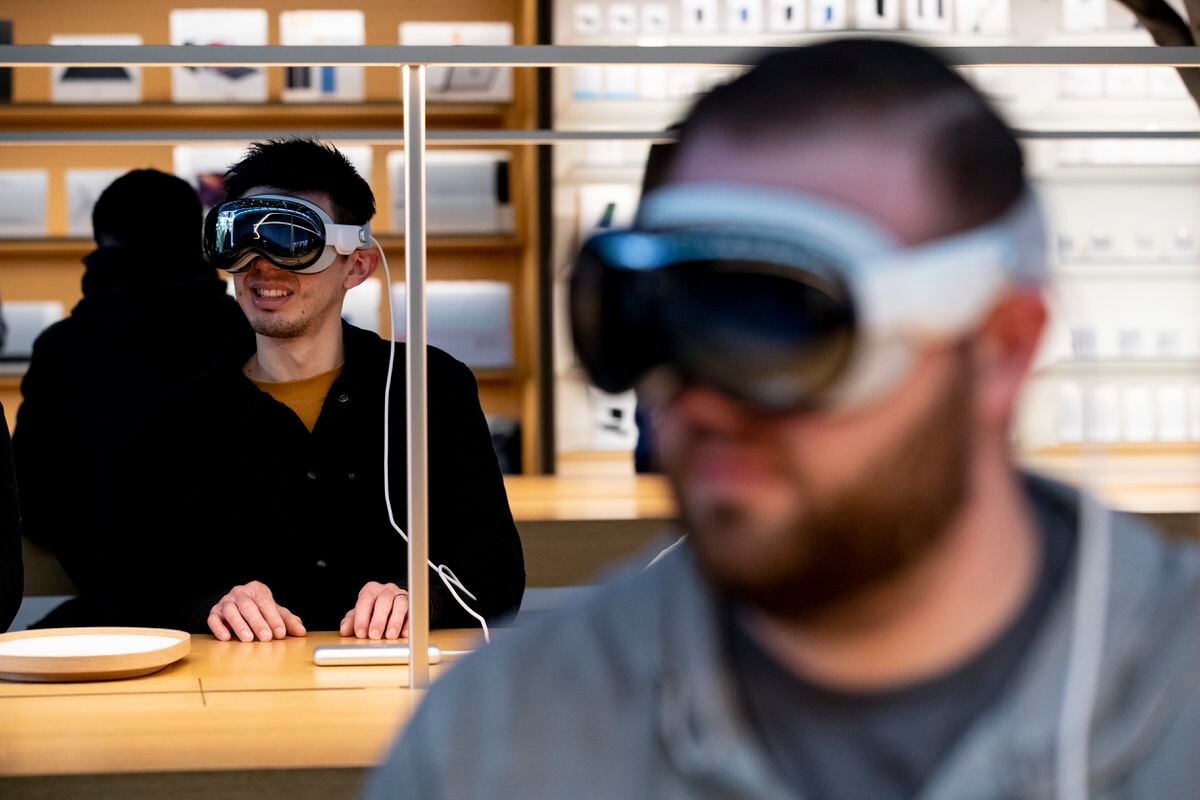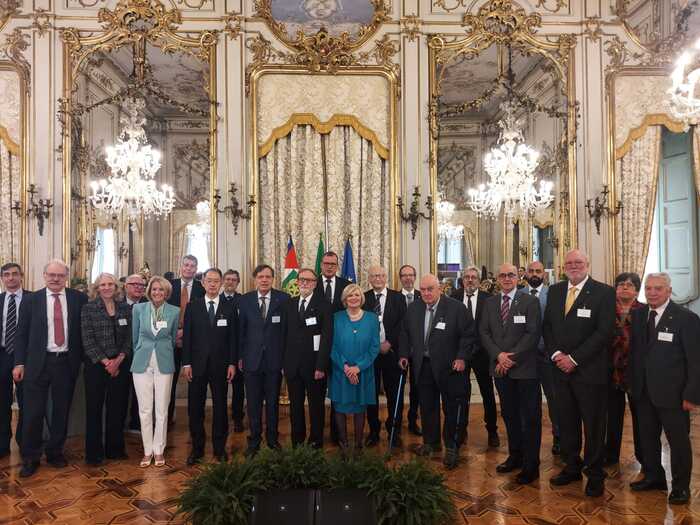For Judit Carrera, a 47-year-old from Barcelona, science is too important to be left only in the hands of scientists.
She believes that cultural institutions like the one she directs, the Barcelona Center for Contemporary Culture (CCCB), should help to decipher it.
Starting from “rigor, but also creating a bond through emotion”.
Since she became its director in 2018, the CCCB has programmed exhibitions, as fascinating as they are profound, on quantum physics, Mars, symbiotic relationships in nature, and next year there will be another one on artificial intelligence.
Now they have just shut down Cerebro(s), which travels to Madrid, to the Espacio Fundación Telefónica, after attracting more than 86,000 people.
With original materials from the father of modern neuroscience, Santiago Ramón y Cajal,
Ask.
What do you want the public to take away from these scientific exhibitions?
Response.
When we raise a topic it is because we consider that it is central, important, that it challenges contemporary society, but in no way do we want to impose a thesis or a moral, rather it is about raising an open conversation.
Q.
What can a cultural center contribute to Mars?
R.
There is talk of the growing possibility of colonizing Mars, of space travel, of a great leap in space exploration.
We thought it was nice to give a historical perspective to this look at Mars, the great red mirror, a mirror in which humanity projected its imaginaries.
Mars had always generated imaginaries and certain fears: that of colonization, of aliens.
And right now we are rather doing the tour in reverse: what are the chances of escaping from planet Earth to go to live on Mars?
It also had a hopeful, powerful message, of imagining that there is a future despite the climate crisis we are experiencing: that in a place with such a desert environment, so bleak, there were signs of life.
“We live in a present in which imagination is limited”
P.
Also on the contrary: let's go there because we'll kill this one.
R.
Speaking with the scientific community, what they say is this expansion of capitalism: we are going to kill the Earth, it doesn't matter, let's keep killing it to go live there.
But that science is investigating how life can arise in places where it was apparently extinct;
there is research being done there to apply the results here.
Q.
The tycoon Elon Musk wants to connect our brain to a machine: the future poses scary scenarios.
R.
We cannot understand today's world without the convergence of two very powerful phenomena that are accelerating the perception of total transformation that is the new industrial revolution, which includes robotics, nanotechnology, the Internet of things, biotechnology, etc. , which is transforming what it means to be human today.
And the other, which is the climate crisis.
They open up very intense questions about what the future is.
In the end, the great questions of all time are freedom, good and evil, and not simply the fascination with the latest technological
gadget
.
And if we leave this debate exclusively in the hands of science or technology companies, we are losing a huge opportunity.
“Art can invent new horizons for science”
P.
Is that debate failing?
R. What we do with this fusion between the human and the machine, or how we approach the future of humanity and life on the planet, cannot be a debate that remains exclusively in the hands of the research community, scientists and technologists, because are very central questions of the contemporary world.
It must be done from the culture as well.
And science has to be an instrument at the service of a political and philosophical debate that goes far beyond science.
Q.
What does the CCCB contribute compared to the classic science museum?
R.
There is no culture without scientific culture and that traditional division between culture and science has been completely blurred for many years.
Our gaze is from the humanities, from the great questions that literature, philosophy, history, cinema, about the great scientific challenges.
And understanding that science has to interact with other spheres of knowledge.
Q.
What explains an artistic installation about such scientific phenomena?
R.
The world of art is a precursor to other possible worlds, it can invent horizons for science, to anticipate things that have not happened.
And I think that this voice of art is extremely important at a time like the one we are living in, a present in which imagination is limited.
They are telling us that there is no future, that the planet is going to become extinct, that the algorithm decides and you decide nothing.
We claim the freedom to imagine another future.
And I believe that this emancipating power of art and culture in general is also essential for the scientific world.
And it is in this space of intersection between artists and scientists that a slightly more open future emerges.
At a time when the future tends to close and deny itself, it seems fundamental to me.
"We must claim the freedom to imagine another future"
Q.
Do you have an idea of the perception that people have when faced with an artistic perspective to approach science?
R.
They generate enormous curiosity and fascination, which is accompanied by questions that sometimes turn into fears.
Our projects try to better explain what all the edges of these debates are.
That there is a rigor in scientific knowledge, but also a bond through emotion.
And this is achieved by art, by cinema, by artistic installation, by interaction.
It is the transmission of a certain passion for knowledge, a certain passion for the world.
With Mars, for example, we held a meeting of top-level astrophysicists and a class of 15-year-old boys from the Raval neighborhood and from that session, due to the passion with which the astrophysicist was explaining how the planets work, two or three came out guys saying: I want to be an astrophysicist in the future.
It is a seed that you are planting.
Q.
Isn't science doing the task of transmitting fascination well?
R.
For a long time, exhibitions cannot be exclusively encyclopedic, transmitting knowledge pure and simple, but rather are lived and heartfelt experiences.
Science can be explained by a writer, by a filmmaker, by an anthropologist.
It is good to open the records from which you can approach scientific knowledge.
Q.
And how do you talk about Mars, for example, from a local perspective?
A. It is super essential to our mission.
We must be a reflection, a mirror of the reality that gives birth to them.
The CCCB is in Barcelona and they are not in Gijón or they are not in Paris.
It has to be a mirror of the society that makes it emerge.
And at the same time, the vocation for universality, the vocation to speak in the first person with the world and to participate in the global debate without complexes from this place.
I believe that this is true cosmopolitanism, wanting to converse with the world from a situated place, giving voice to local scientists, to local artists.
Culture is also this space that helps make sense of the world and creates bonds.
When the CCCB was created in 1994, there was 2% of the population of foreign origin in Barcelona, today we are at 30% of the population of foreign origin.
If we want to be relevant,
we have to be a reflection of your own society.
We are located in a highly complex neighbourhood, which is the Raval neighbourhood, and for us the link with this neighbourhood, which also teaches us many things, is fundamental.
Q.
What response do you receive from the scientific world?
R.
The truth is that the relationship is extraordinary.
We have worked with the great scientific research centers in Barcelona;
Now we are preparing one for next year on artificial intelligence with the Barcelona Supercomputing Center.
In recent years, there has really been an enormous opening on the part of the scientific community, because they understand the importance of transferring the knowledge that they generate, but also because they have understood that it is necessary to link science to other artistic disciplines.
Q.
You would like this exhibition to serve as the germ of the future Ramón y Cajal Museum.
R.
It is that one of the things that this exhibition intended is also to vindicate the legacy of Cajal.
An exhibition is never a closed chapter, this is now coming to Madrid in another version, the EU may take it to Brussels.
Has a life of its own.
That it contributes to give a small push to the legacy of Cajal, it would be a great prize for us.
You can follow
MATERIA
on
,
and
, or sign up here to receive
our weekly newsletter
.
Subscribe to continue reading
Read without limits
Keep reading
I'm already a subscriber









